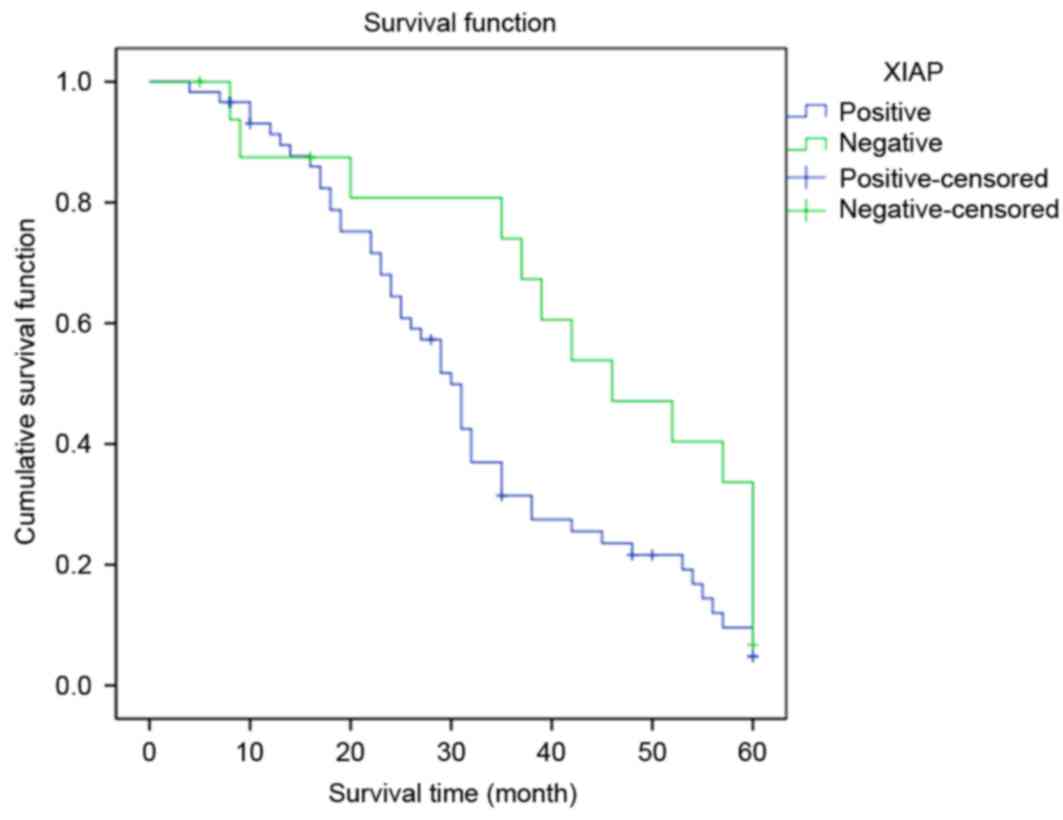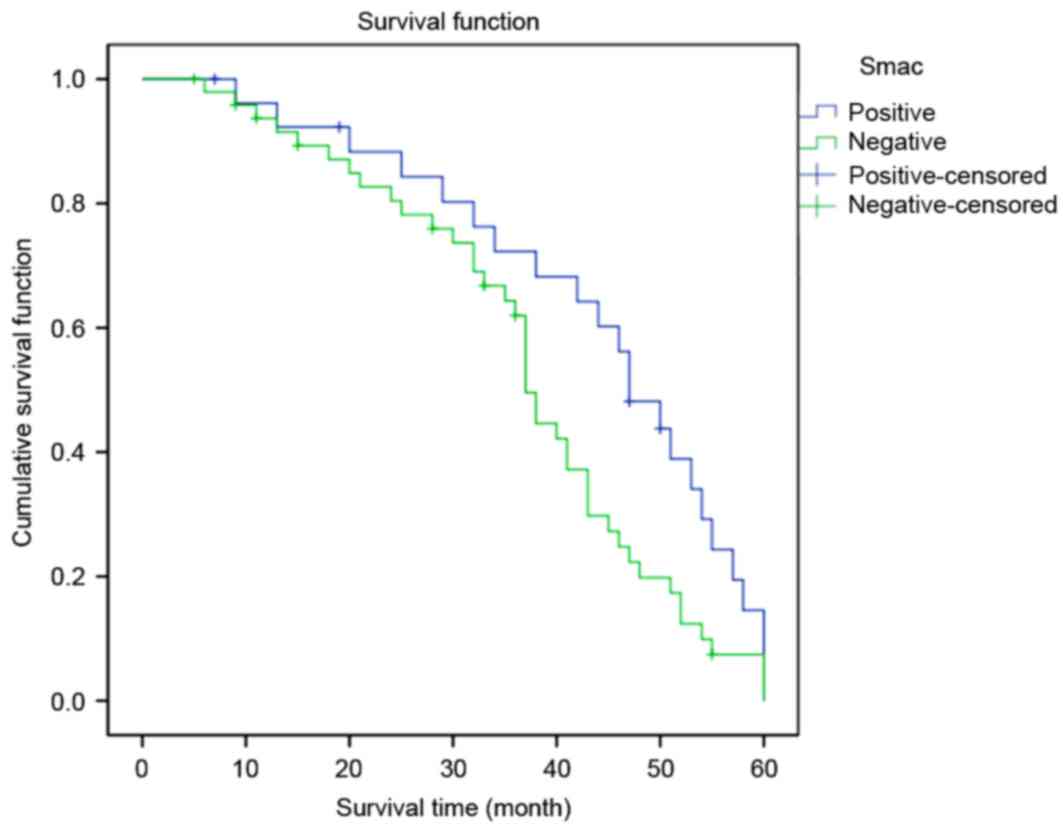|
1
|
Husain RS and Ramakrishnan V: Global
variation of human papillomavirus genotypes and selected genes
involved in cervical malignancies. Ann Glob Health. 81:675–683.
2015. View Article : Google Scholar : PubMed/NCBI
|
|
2
|
Ahmad F and Stewart DE: Predictors of
clinical breast examination among South Asian immigrant women. J
Immigr Health. 6:119–126. 2004. View Article : Google Scholar : PubMed/NCBI
|
|
3
|
Gadducci A, Guerrieri ME and Greco C:
Tissue biomarkers as prognostic variables of cervical cancer. Crit
Rev Oncol Hematol. 86:104–129. 2013. View Article : Google Scholar : PubMed/NCBI
|
|
4
|
Kyrgiou M, Mitra A, Arbyn M, Stasinou SM,
Martin-Hirsch P, Bennett P and Paraskevaidis E: Fertility and early
pregnancy outcomes after treatment for cervical intraepithelial
neoplasia: Systematic review and meta-analysis. BMJ. 349:g61922014.
View Article : Google Scholar : PubMed/NCBI
|
|
5
|
Shoji Y, Saegusa M, Takano Y, Ohbu M and
Okayasu I: Correlation of apoptosis with tumour cell
differentiation, progression, and HPV infection incervical
carcinoma. J Clin Pathol. 49:134–138. 1996. View Article : Google Scholar : PubMed/NCBI
|
|
6
|
Saslow D, Solomon D, Lawson HW, Killackey
M, Kulasingam SL, Cain J, Garcia FA, Moriarty AT, Waxman AG, Wilbur
DC, et al: American cancer society, American society for colposcopy
and cervical pathology, and American society for clinical pathology
screening guidelines for the prevention and early detection of
cervical cancer. Am J Clin Pathol. 137:516–542. 2012. View Article : Google Scholar : PubMed/NCBI
|
|
7
|
Manzo-Merino J, Contreras-Paredes A,
Vázquez-Ulloa E, Rocha-Zavaleta L, Fuentes-Gonzalez AM and Lizano
M: The role of signaling pathways in cervical cancer and molecular
therapeutic targets. Arch Med Res. 45:525–539. 2014. View Article : Google Scholar : PubMed/NCBI
|
|
8
|
Massad LS, Einstein MH, Huh WK, Katki HA,
Kinney WK, Schiffman M, Solomon D, Wentzensen N and Lawson HW: 2012
ASCCP Consensus Guidelines Conference: 2012 updated consensus
guidelines for the management of abnormal cervical cancer screening
tests and cancer precursors. J Low Genit Tract Dis. 17 5 Suppl
1:S1–S27. 2013. View Article : Google Scholar : PubMed/NCBI
|
|
9
|
Jiang P and Yue Y: Human papillomavirus
oncoproteins and apoptosis (Review). Exp Ther Med. 7:3–7. 2014.
View Article : Google Scholar : PubMed/NCBI
|
|
10
|
Liu SS, Tsang BK, Cheung AN, Xue WC, Cheng
DK, Ng TY, Wong LC and Ngan HY: Anti-apoptotic proteins, apoptotic
and proliferative parameters and their prognostic significance in
cervical carcinoma. Eur J Cancer. 37:1104–1110. 2001. View Article : Google Scholar : PubMed/NCBI
|
|
11
|
Yang YL and Li XM: The IAP family:
Endogenous caspase inhibitors with multiple biological activities.
Cell Res. 10:169–177. 2000. View Article : Google Scholar : PubMed/NCBI
|
|
12
|
Silke J and Meier P: Inhibitor of
apoptosis (IAP) proteins-modulators of cell death and inflammation.
Cold Spring Harb Perspect Biol. 5:a0087302013. View Article : Google Scholar : PubMed/NCBI
|
|
13
|
Lukacs C, Belunis C, Crowther R, Danho W,
Gao L, Goggin B, Janson CA, Li S, Remiszewski S, Schutt A, et al:
The structure of XIAP BIR2: Understanding the selectivity of the
BIR domains. Acta Crystallogr D Biol Crystallogr. 69:1717–1725.
2013. View Article : Google Scholar : PubMed/NCBI
|
|
14
|
Du C, Fang M, Li Y, Li L and Wang X: Smac,
a mitochondrial protein that promotes cytochrome c-dependent
caspase activation by eliminating IAP inhibition. Cell. 102:33–42.
2000. View Article : Google Scholar : PubMed/NCBI
|
|
15
|
Krepler C, Chunduru SK, Halloran MB, He X,
Xiao M, Vultur A, Villanueva J, Mitsuuchi Y, Neiman EM, Benetatos
C, et al: The novel SMAC mimetic birinapant exhibits potent
activity against human melanoma cells. Clin Cancer Res.
19:1784–1794. 2013. View Article : Google Scholar : PubMed/NCBI
|
|
16
|
Lecis D, Drago C, Manzoni L, Seneci P,
Scolastico C, Mastrangelo E, Bolognesi M, Anichini A, Kashkar H,
Walczak H and Delia D: Novel SMAC-mimetics synergistically
stimulate melanoma cell death in combination with TRAIL and
Bortezomib. Br J Cancer. 102:1707–1716. 2010. View Article : Google Scholar : PubMed/NCBI
|
|
17
|
Finlay D, Vamos M, González-López M,
Ardecky RJ, Ganji SR, Yuan H, Su Y, Cooley TR, Hauser CT, Welsh K,
et al: Small-molecule IAP antagonists sensitize cancer cells to
TRAIL-induced apoptosis: Roles of XIAP and cIAPs. Mol Cancer Ther.
13:5–15. 2014. View Article : Google Scholar : PubMed/NCBI
|
|
18
|
Shintani M, Sangawa A, Yamao N and
Kamoshida S: Smac/DIABLO expression in human gastrointestinal
carcinoma: Association with clinicopathological parameters and
survivin expression. Oncol Lett. 8:2581–2586. 2014.PubMed/NCBI
|
|
19
|
Fulda S: Smac mimetics as IAP antagonists.
Semin Cell Dev Bio. 39:132–138. 2015. View Article : Google Scholar
|
|
20
|
Saelens X, Festjens N, Walle L Vande, van
Gurp M, van Loo G and Vandenabeele P: Toxic proteins released from
mitochondria in cell death. Oncogene. 23:2861–2874. 2004.
View Article : Google Scholar : PubMed/NCBI
|
|
21
|
Yang QH and Du C: Smac/DIABLO selectively
reduces the levels of c-IAP1 and c-IAP2 but not that of XIAP and
livin in HeLa cells. J Biol Chem. 279:16963–16970. 2004. View Article : Google Scholar : PubMed/NCBI
|
|
22
|
Suzuki Y, Nakabayashi Y and Takahashi R:
Ubiquitin-protein ligase activity of X-linked inhibitor of
apoptosis protein promotes proteasomal degradation of caspase-3 and
enhances its anti-apoptotic effect in Fas-induced cell death. Proc
Natl Acad Sci USA. 98:8662–8667. 2001. View Article : Google Scholar : PubMed/NCBI
|
|
23
|
MacFarlane M, Merrison W, Bratton SB and
Cohen GM: Proteasome-mediated degradation of Smac during apoptosis:
XIAP promotes Smac ubiquitination in vitro. J Biol Chem.
277:36611–36616. 2002. View Article : Google Scholar : PubMed/NCBI
|
|
24
|
Baldus SE, Schwarz E, Lohrey C, Zapatka M,
Landsberg S, Hahn SA, Schmidt D, Dienes HP, Schmiegel WH and
Schwarte-Waldhoff I: Smad4 deficiency in cervical carcinoma cells.
Oncogene. 24:810–819. 2005. View Article : Google Scholar : PubMed/NCBI
|
|
25
|
Phillipps HR and Hurst PR: XIAP: A
potential determinant of ovarian follicular fate. Reproduction.
144:165–176. 2012. View Article : Google Scholar : PubMed/NCBI
|
|
26
|
Pecorelli S, Zigliani L and Odicino F:
Revised FIGO staging for carcinoma of the cervix. Int J Gynaecol
Obstet. 105:107–108. 2009. View Article : Google Scholar : PubMed/NCBI
|
|
27
|
Böcker W: WHO classification of breast
tumors and tumors of the female genital organs: Pathology
andgenetics. Verh Dtsch Ges Pathol. 86:116–119. 2002.(In German).
PubMed/NCBI
|
|
28
|
Wright TC Jr, Cox JT, Massad LS, Carlson
J, Twiggs LB and Wilkinson EJ: 2001 ASCCP-sponsored Consensus
Workshop: 2001 Consensus guidelines forthe management of women with
cervical intraepithelial neoplasia. J Low Genit Tract Dis.
7:154–167. 2003.PubMed/NCBI
|
|
29
|
Verhagen AM, Ekert PG, Pakusch M, Silke J,
Connolly LM, Reid GE, Moritz RL, Simpson RJ and Vaux DL:
Identification of DIA-BLO, a mammalian protein that promotes
apoptosis by binding toand antagonizing IAP proteins. Cell.
102:43–55. 2000. View Article : Google Scholar : PubMed/NCBI
|
|
30
|
Malchenko S, Galat V, Seftor EA, Vanin EF,
Costa FF, Seftor RE, Soares MB and Hendrix MJ: Cancer hallmarks in
induced pluripotent cells: New insights. J Cell Physiol.
225:390–393. 2010. View Article : Google Scholar : PubMed/NCBI
|
|
31
|
Yang X, Hao Y, Ferenczy A, Tang SC and
Pater A: Overexpression of anti-apoptotic gene BAG-1 in human
cervical cancer. Exp Cell Res. 247:200–207. 1999. View Article : Google Scholar : PubMed/NCBI
|
|
32
|
Espinosa M, Cantú D, Herrera N, Lopez CM,
De la Garza JG, Maldonado V and Melendez-Zajgla J: Inhibitors of
apoptosis proteins in human cervical cancer. BMC Cancer. 6:452006.
View Article : Google Scholar : PubMed/NCBI
|
|
33
|
Silke J and Vucic D: IAP family of cell
death and signaling regulators. Methods Enzymol. 545:35–65. 2014.
View Article : Google Scholar : PubMed/NCBI
|
|
34
|
Wei Y, Fan T and Yu M: Inhibitor of
apoptosis proteins and apoptosis. Acta Biochim Biophys Sin
(Shanghai). 40:278–288. 2008. View Article : Google Scholar : PubMed/NCBI
|
|
35
|
Estornes Y and Bertrand MJ: IAPs,
regulators of innate immunity and inflammation. Semin Cell Dev
Biol. 39:106–114. 2015. View Article : Google Scholar : PubMed/NCBI
|
|
36
|
Cavin LG, Wang F, Factor VM, Kaur S,
Venkatraman M, Thorgeirsson SS and Arsura M: Transforming growth
factor-alpha inhibits the intrinsic pathway of c-Myc-induced
apoptosis through activation of nuclear factor-kappaB in murine
hepatocellular carcinomas. Mol Cancer Res. 3:403–412. 2005.
View Article : Google Scholar : PubMed/NCBI
|
|
37
|
Elsawy MA, Tikhonova IG, Martin L and
Walker B: Smac-derived Aza-peptide as an aminopeptidase-resistant
XIAP BIR3 antagonist. Protein Pept Lett. 22:836–843. 2015.
View Article : Google Scholar : PubMed/NCBI
|
|
38
|
Hamacher-Brady A, Choe SC, Krijnse-Locker
J and Brady NR: Intramitochondrial recruitment of endolysosomes
mediates Smac degradation and constitutes a novel intrinsic
apoptosis antagonizing function of XIAP E3 ligase. Cell Death
Differ. 21:1862–1876. 2014. View Article : Google Scholar : PubMed/NCBI
|
|
39
|
Fulda S, Wick W, Weller M and Debatin KM:
Smac agonists sensitize for Apo2L/TRAIL- or anticancer drug-induced
apoptosis and induce regression of malignant glioma in vivo. Nat
Med. 8:808–815. 2002.PubMed/NCBI
|
|
40
|
Schliep S, Decker T, Schneller F, Wagner H
and Häcker G: Functional evaluation of the role of inhibitor of
apoptosis proteins in chronic lymphocytic leukemia. Exp Hematol.
32:556–562. 2004. View Article : Google Scholar : PubMed/NCBI
|
|
41
|
Kempkensteffen C, Hinz S, Christoph F,
Krause H, Magheli A, Schrader M, Schostak M, Miller K and Weikert
S: Expression levels of the mitochondrial IAP
antagonistsSmac/DIABLO and Omi/HtrA2 in clear-cell renal cell
carcinomas and their prognostic value. J Cancer Res Clin Oncol.
134:543–550. 2008. View Article : Google Scholar : PubMed/NCBI
|
|
42
|
Bao ST, Gui SQ and Lin MS: Relationship
between expression of Smac and Survivin and apoptosis of primary
hepatocellular carcinoma. Hepatobiliary Pancreat Dis Int.
5:580–583. 2006.PubMed/NCBI
|
|
43
|
Vucic D, Stennicke HR, Pisabarro MT,
Salvesen GS and Dixit VM: ML-IAP, a novel inhibitor of apoptosis
that is preferentially expressed in human melanomas. Cur Biol.
10:1359–1366. 2000. View Article : Google Scholar
|
|
44
|
LaCasse EC, Mahoney DJ, Cheung HH,
Plenchette S, Baird S and Korneluk RG: IAP-targeted thera-pies for
cancer. Oncogene. 27:6252–6275. 2008. View Article : Google Scholar : PubMed/NCBI
|
|
45
|
Vince JE, Wong WW, Khan N, Feltham R, Chau
D, Ahmed AU, Benetatos CA, Chunduru SK, Condon SM, McKinlay M, et
al: IAP antagonists target cIAP1 to induce TNFalpha-dependent
apoptosis. Cell. 13:682–693. 2007. View Article : Google Scholar
|














